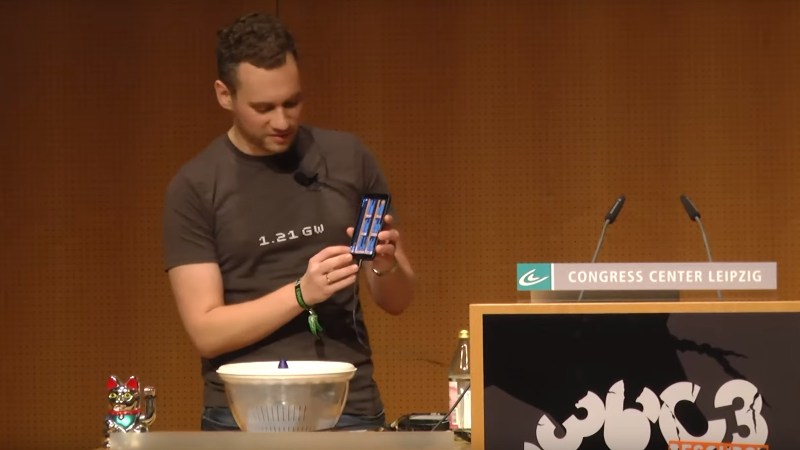It’s no secret that the average smart phone today packs an abundance of gadgets fitting in your pocket, which could have easily filled a car trunk a few decades ago. We like to think about video cameras, music playing equipment, and maybe even telephones here, but let’s not ignore the amount of measurement equipment we also carry around in form of tiny sensors nowadays. How to use those sensors for educational purposes to teach physics is presented in [Sebastian Staacks]’ talk at 36C3 about the phyphox mobile lab app.
While accessing a mobile device’s sensor data is usually quite straightforwardly done through some API calls, the phyphox app is not only a shortcut to nicely graph all the available sensor data on the screen, it also exports the data for additional visualization and processing later on. An accompanying experiment editor allows to define custom experiments from data capture to analysis that are stored in an XML-based file format and possible to share through QR codes.
Aside from demonstrating the app itself, if you ever wondered how sensors like the accelerometer, magnetometer, or barometric pressure sensor inside your phone actually work, and which one of them you can use to detect toilet flushing on an airplane and measure elevator velocity, and how to verify your HDD spins correctly, you will enjoy the talk. If you just want a good base for playing around with sensor data yourself, it’s all open source and available on GitHub for both Android and iOS.
















I have a phone with hall effect(?) sensor, so when I open or close my flip case (or placing a small magnet on the upper left corner) makes the device sleep or wake up
(nokia 8.0).
But I can not find on any program which sensor is responsible for it.
(I tried phyphox, cpu info from fdroid and some adware from google play).
Here is the phyphox device info output:
https://pastebin.com/EVB6zcUe
Any idea?
maybe it’s just a small reed-switch?
My tablet has a similar function and I’ve used phyphox in the past, though I never looked for that sensor (will do so in the future).
Case lid sensor on one of my machines is magnetic, but as far as I can tell it’s an independent system, not even on the SMB.
– no idea, just commenting I believe these sensors are at least relatively common. Most (?) relatively late-model Samsung Galaxy’s support flip cases with a magnet to sense it closing/opening.
Yes, if memory serves its a variant of the HM5883 but integrated into the gyro/accelerometer chip.
The early phones like S3 Neo used a separate chip.
Think the first Samsung phone to use a barometric sensor was the S4, though absolute calibration is a pain.
I wonder if the accelerometer data could be transmitted back into a cnc controller to do a closed loop feedback? Maybe the resolution wouldn’t be good enough, but even a rough feedback could stop the machine if the tool crashed into a hold-down clamp.
There’s a REST API that should be able to send the data to e.g. a Raspberry Pi (or the controller right away if it could run the server counterpart itself), but not sure how reliable / useful it would be due to delay.
USB might be a good option here, but doesn’t look like phyphox supports that at the moment or has any plans to add it.